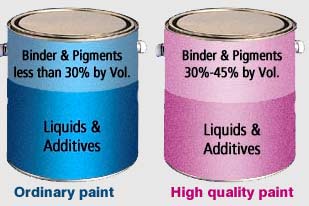Pigments are the colouring elements present in the
paints. They have a very special place in the paints industry. The
paints industry uses from a broad array some of which includes
speciality pigments to manufacture paints for a variety of applications.
Ranging from automobiles to buildings, hardware the list is virtually
endless.
The paints that employs the wide variety of pigments can be broadly
classified according to application into two types. They are colorants
for the industrial applications and architectural/decorative
applications respectively. Let's see through the diagram the process of
use of Pigments in manufacture of Powder Coatings.

 Earth
colour Pigment-
Earth
colour Pigment- Earth colours are derived from the natural sources
and are inorganic in nature (i.e. metal oxides). Examples that can be
given of earth colors are: ocher, umber, terra di siena, bolus, swedish
red etc. Earth pigments are:-
- Lightfast
- Chemical
- Fastweather Resistant
 Mineral
Pigments-
Mineral
Pigments- Mineral pigments comprises synthetic inorganic pigments.
They include among others chrome oxide green, titanium dioxide, iron
oxide yellow, red, brown and black, ultramarine blue, nickel-titanium
yellow etc. One of the disadvantages of mineral pigments is the toxicity
and ecological imbalance.
 Plant
Color Pigments-
Plant
Color Pigments- Plant colors are sourced from natural organic
pigment found in plants. Examples of plant colors can be given of
indigo, alizarin red, woad, reseda, alkanna violet and saffron.
 Synthetic
Pigments-
Synthetic
Pigments- Synthetic Pigments are the most widely used but artificial
organic pigments and dyes. They give the advantage of synthesization in
almost any shade, especially in pure color tones and gives dazzling
visual effects. Examples are: azo, dioxazine and phthalocyanin.


